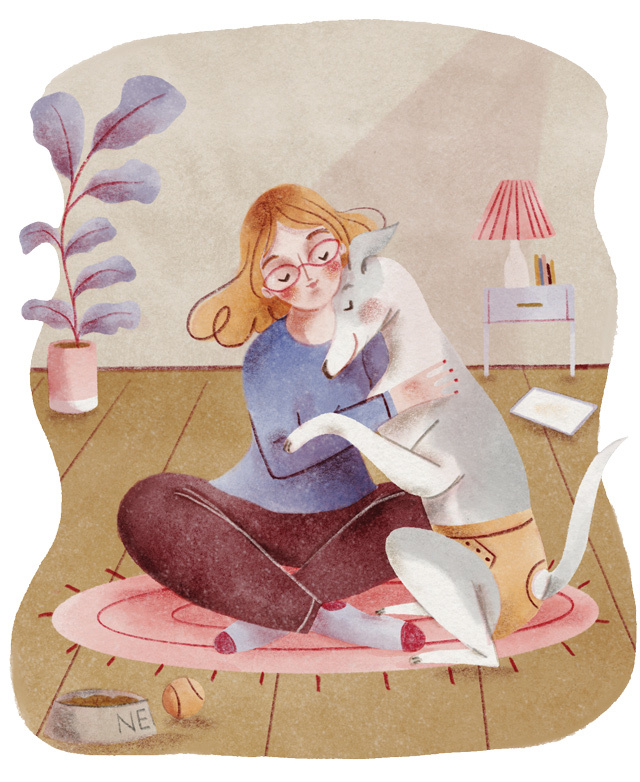If you have a pet, chances are, they’ll leave this earth before you. It’s a cruel truth of nature, but it’s also a gift. My almost 17-year-old Italian greyhound Ned recently came to the end of his tenacious little life. The changes first became obvious in how he interacted with the world, then in his frailty and his neediness. Caring for him made me feel like a new mom again; my son learned to hold him delicately and the whole family became very patient—there are lessons to be gained in caring for the dying. Understanding and planning for our pet’s end-of-life care allows us to return their unconditional devotion.
The Beginning of the End
Stock up on pee pads and doggie diapers—many options are available, including washable ones. Even well-behaved cats are likely to eschew traditional litter boxes and may need to use a low tray or pan. Watch for signs of pain—aggressive behavior, hiding, vocalizing more, changes in eating/drinking/sleeping habits, panting or breathing changes, trouble with mobility, and shaking/trembling—and work with your vet to keep it under control. Pet-specific cannabis derivatives (Ned’s CBD treats helped with mobility), acupuncture, and even chiropractic care can help keep them comfortable and create more good memories.
Get Support
In the end, Ned couldn’t be left alone without getting himself in some predicament and he was never good with a crate, so we spent a lot of time in shifts tending to him. Enlist the help of family and friends and take time to recharge. It’s a lot to care for a being who can’t speak.
Know Your Options
Talk with your vet about end-of-life signs and consider what you want that end of life to look like. Some pets die naturally at home; be prepared for next steps (having towels or blankets to wrap their body is helpful, as is some kind of carrying container). If your pet’s discomfort is too much, euthanization is a humane option, either at your vet’s office, or with an at-home service. If you want to bury your pet at home, check local laws and call your local utility before you dig. Many vets offer traditional cremation, allowing you to receive your pet’s ashes for around $150; group cremation is less expensive. Water cremation aka “aquamation”—an environmentally responsible process that uses water flow and alkali to accelerate decomposition—may also be an option. Our experience with Resting Waters, a woman-owned-and-operated aquamation provider in Seattle, allowed us to make a connection with the people providing care to our beloved pet, and was just a bit more expensive. (Their site, restingwaters.com, has great resources.)
Understand the End
It’s not always obvious when it’s time for your pet to go. Some animals will avoid interaction or even hide. Some may want to be very close by. It’s up to us to know our pets and to understand that it never really feels like the right time when it’s happening. It’s only when we start to recover from our grief that we can see that they were ready to go. Pet loss support groups can really help. So can art (making or commissioning it), and spending time with another pet (if you’re, ahem, a collector like me). Know that no matter what, it sucks, but you will get through it. Hug your elderly pet now and feed them everything they want. Ned’s ghost suggests a paté of ground beef. –Jenny Rose Ryan
illustrated by Karla Alcazar
This article originally appeared in BUST’s Summer 2021 print edition. Subscribe today!


